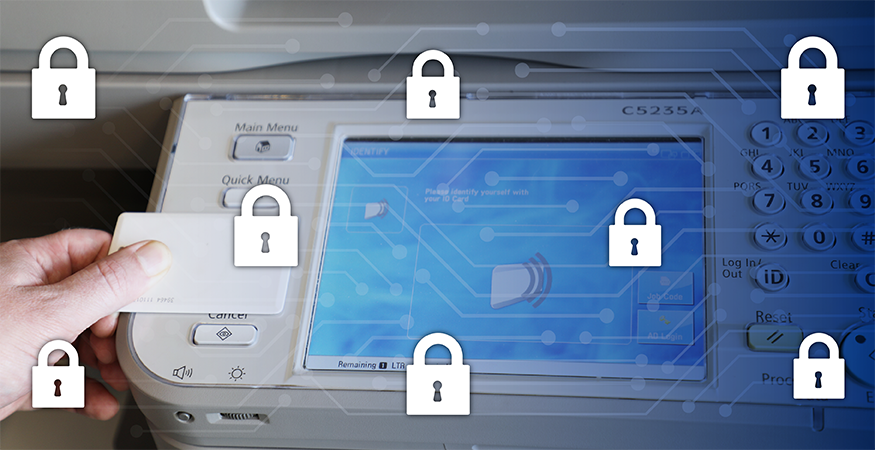Did you ever wonder how a hacker launches a worldwide attack? Last year, the hacker @HackerGiraffe launched a worldwide printer hack, resulting in crude messages being printed out on thousands of printers worldwide.
To launch this attack, the hacker simply searched a list of publicly available printers and then wrote a script to print something on all of these printers.
That’s all it took. So many organizations failed to put basic security in place on their printer networks that a global hacking could be executed in a matter of minutes. Fortunately, this attack was benign- it was meant to bring attention to the issue of printer insecurity. However, other hackers do not have the same intentions.
Printer Security: It Can Be Done!
The challenge for network administrators and IT staff is that a printer is basically a server on your network. It has network services, and, in some cases, a hard drive for data storage. Copy machines are even more capable and dangerous. In many cases, a copier will store a digital copy of everything it scans, copies or prints on an internal hard drive. These images can be accessed over a network by anyone that can access the machine.
These capabilities are all important for basic printing, copying and scanning functions. However, authentication on a printer is very limited. Often, anyone with network access (or Internet access, if the network that the printer is connected to is publicly available) can access the printer and many of its functions.
Print Security in 3 Steps
As with all devices connected to the Internet, printers without appropriate security measures in place can be hacked, infected with malware or be hijacked by denial of service attacks that can debilitate the Internet itself. While larger companies attract the most attention from national media, small and medium-sized businesses (SMBs) are also at risk of having their customer data breached. According to the Poneman Institute, nearly half of all cyber-attacks are targeted at small and mid-sized businesses (41 percent). When an SMB is targeted, these criminals are 15 times more likely to succeed as compared to an attempt on a larger organization.
Some of the basic steps IT administrators can take to secure their print environment are:
Step 1: Secure by Design
Security begins by taking a big-picture view of your print network. Map all your devices and check to see that data is secure at every stage of the workflow–from the data path along the network to the device itself. To do that:
- Control access to the printer and its functions at the group, individual, and activity level
- Always include printers in standard network security measures and policies
Step 2: Put the Security in Place
Use all available tools to protect sensitive documents from loss or theft. This includes cybersecurity tools, as well as print management software which includes print-specific controls and auditing.
- Update and upgrade your printers to keep on top of security improvements
- Password-protect your printer using a strong password
- Implement user-access restrictions to discourage unwanted users
- Always install manufacturer software
Step 3: Make Sure Your People Are Secure
Of course, none of this will work if your staff ignores or circumvents security controls. Take the time to familiarize your employees with everything your printers can do and explain the importance of security setting. We also recommend most of our customers use smart cards or other authentication so that print jobs are only finished when the user is at the machine to release it from the print queue. That way, confidential information cannot be stolen from a printer tray.
Given their ubiquity in just about every office nationwide, printers are often the target of malware attacks. Plus, the fact that printers have been an office staple for more than 40 years means that they are sometimes overlooked by CIOs and others who are busy securing more vulnerable-looking devices, like routers or servers.
Whether you are looking to secure your small, medium or large business printer network, or need guidance with managing your printer network efficiency, look to a Managed Print Service (MPS) program to help you manage all aspects of your business printing devices, including printers, scanners, faxes and copiers. Reach out to us today for a free assessment.





